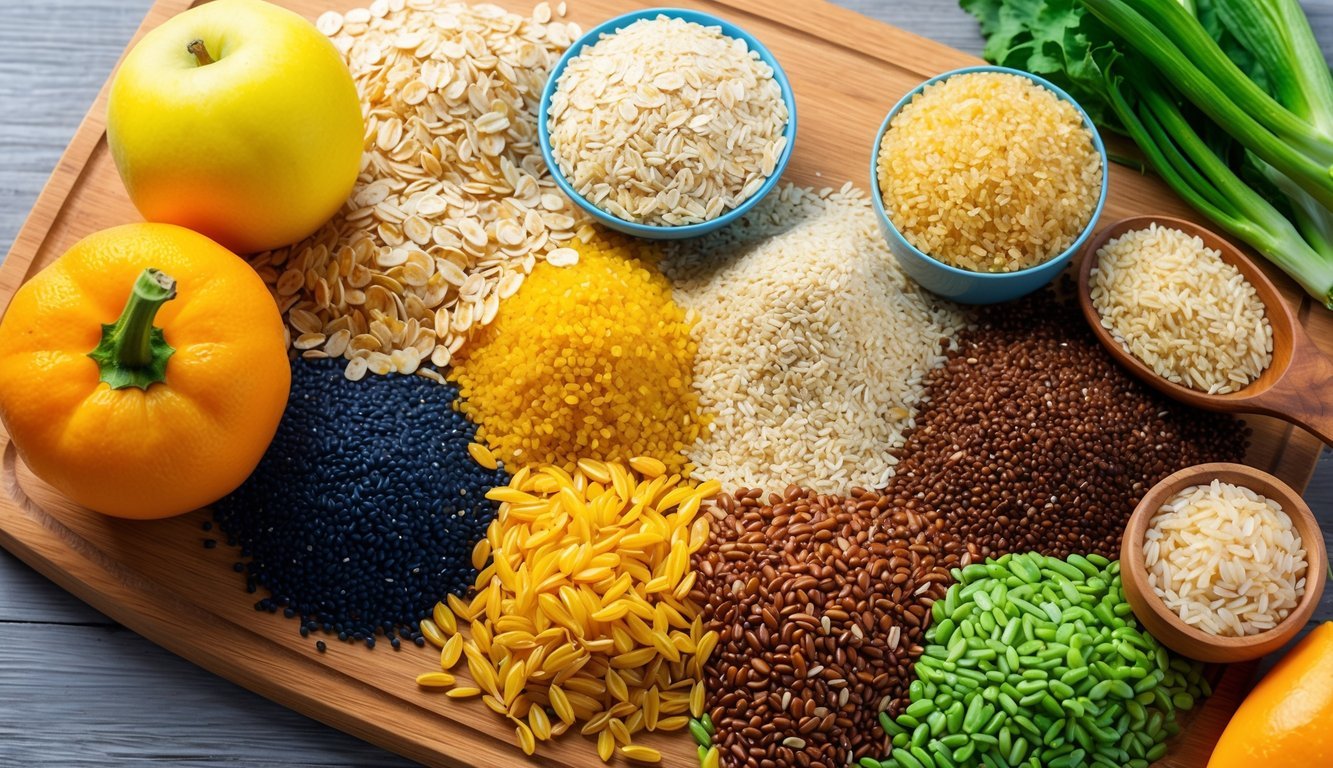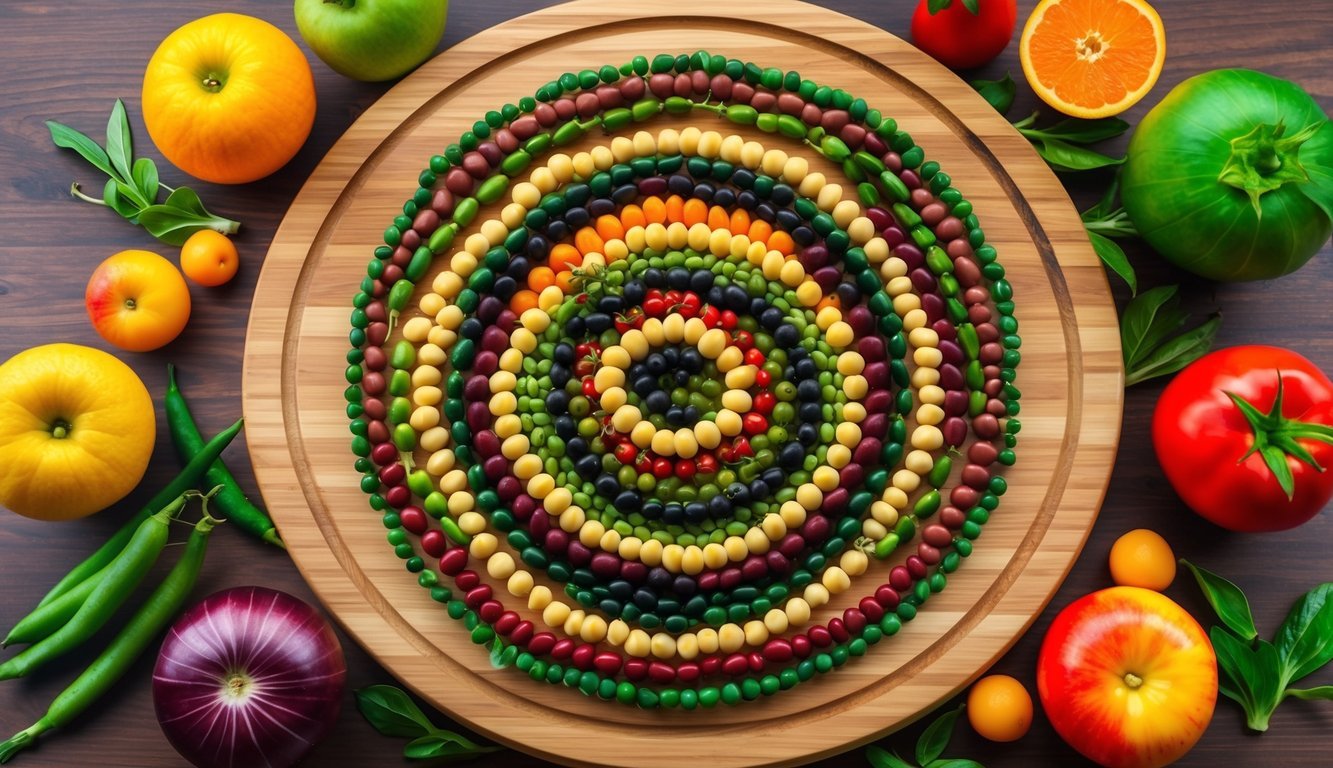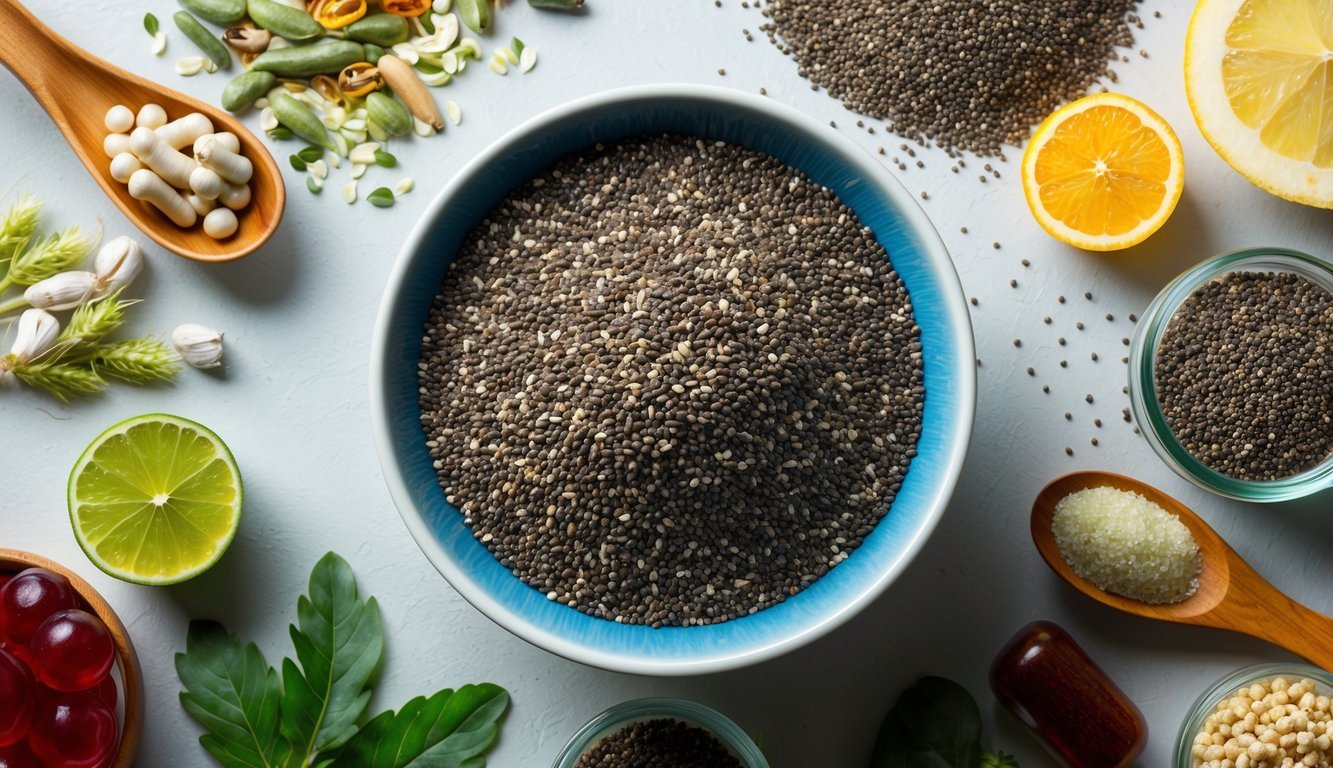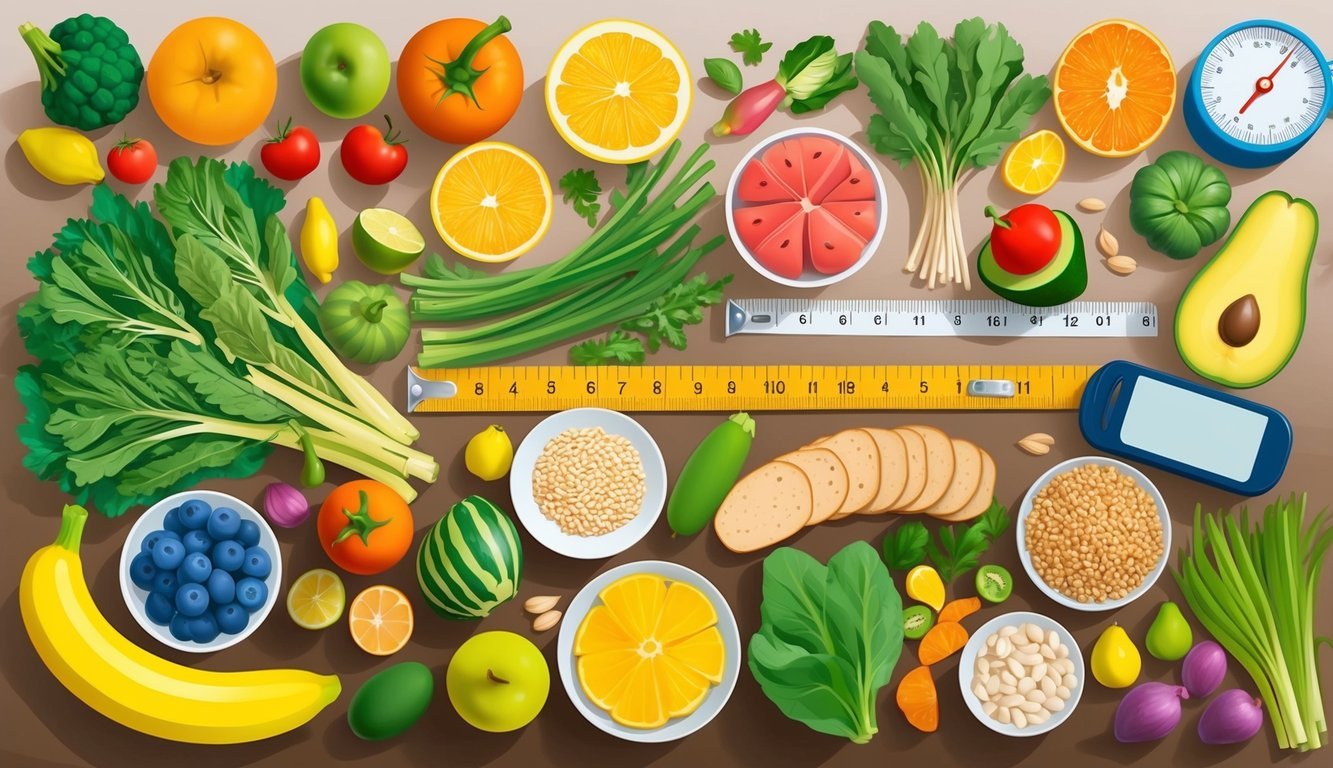Managing blood sugar levels is crucial for overall health, especially for those with conditions like diabetes or prediabetes.
Incorporating natural strategies into your daily routine can effectively help regulate these levels without relying solely on medication.

In exploring these best practices, we aim to highlight simple yet effective lifestyle changes that can make a significant difference.
From food choices to physical activity, each practice offers a unique way to help maintain balanced blood sugar levels while promoting better well-being.
1) Eat whole grains

Incorporating whole grains into your diet can help with managing blood sugar levels.
Whole grains, unlike refined grains, retain their fiber, vitamins, and minerals, which are essential for a balanced diet.
Fiber, particularly soluble fiber found in grains like oats and barley, can slow down digestion.
This slow digestion helps prevent spikes in blood sugar after meals.
For example, buckwheat is a fantastic whole grain option that packs in a good amount of fiber.
You can often find whole grain bread, brown rice, or quinoa.
These options are not just healthier but also keep you feeling full longer.
Plus, they taste great!
Whole grains also tend to have a lower glycemic index.
This means they don’t raise blood sugar levels as quickly, making them a better choice for you.
Overall, adding whole grains has been a simple yet effective way to support my health.
Incorporate more beans

Adding beans to your meals can really help manage blood sugar levels.
Beans are low in sugar while being high in fiber and protein.
This combo keeps you feeling full and helps stabilize your blood sugar.
Kidney beans, black beans, and pinto beans are among the best choices.
They’re not only nutritious but also versatile.
You can toss them into salads, soups, or even blend them into dips.
Beans are also budget-friendly, which is a bonus.
You’ll love knowing you can enjoy a healthy meal without breaking the bank.
Plus, they’re easy to prepare; canned beans save you time, and dried beans can be cooked in bulk.
Regularly including beans in your diet has contributed to my overall health.
They’re linked to lower cholesterol levels and improved digestion, making them a fantastic addition.
If you haven’t tried incorporating more beans, I highly recommend it!
3) Snack on nuts
When I think about healthy snacking, nuts often come to mind.
They’re not just tasty; they’re great for managing blood sugar levels too.
Almonds are my go-to choice.
They’re low in carbs and high in healthy fats, making them a smart option for keeping blood sugar steady.
Just a handful can keep me satisfied without a sugar spike.
I also enjoy walnuts.
They help promote a feeling of fullness, which can prevent those cravings that lead to unhealthy choices later on.
Brazil nuts are another favorite of mine.
Even just two provide only about 1 gram of carbs, so they have minimal impact on blood sugar.
Pairing nuts with a source of protein, like Greek yogurt, creates a well-rounded snack.
This combo provides lasting energy and helps maintain stable blood sugar levels throughout the day.
With so many options, incorporating nuts into your snacks is simple and delicious.
4) Stay hydrated
Staying hydrated is crucial for managing blood sugar levels.
When you drink enough water, it helps your kidneys flush out excess sugar through urine.
Dehydration can lead to higher blood sugar levels, as your body may struggle to concentrate glucose.
Keeping a water bottle handy reminds you to sip throughout the day.
You should aim for at least eight cups of water daily.
Herbal teas or infused water with fruits can make hydration more enjoyable.
Sufficient hydration can also help you feel more energetic.
When I’m well-hydrated, I find it easier to exercise, which is essential for blood sugar control.
Lastly, be mindful of your beverage choices.
Sugary drinks can spike your blood sugar levels, so stick to water or unsweetened options whenever possible.
5) Exercise regularly

Incorporating regular exercise into your routine can really help with your blood sugar management.
It doesn’t have to be intense; even moderate activities like walking, cycling, or jogging can elevate your heart rate and improve your overall health.
Try to mix different types of exercise.
Cardio workouts get your blood pumping, while strength training builds muscle and helps stabilize blood sugar levels.
Playing sports is also a fun way to stay active.
The key is consistency.
Aim for at least 150 minutes of moderate exercise each week.
Breaking this up into smaller sessions makes it more manageable.
A quick 30-minute walk every day can make a big difference.
You should also make sure to stay hydrated.
Drinking water before, during, and after exercise helps maintain good blood sugar control.
It’s a simple way to support your body as you move.
Listening to your body is important too.
If you feel low energy, adjust your routine and rest as needed.
Exercise should feel good and be sustainable over the long term.
6) Reduce sugar intake
Reducing sugar intake is a simple yet effective way to manage blood sugar levels.
I noticed that when I cut back on added sugars, my energy levels felt more stable throughout the day.
Keep an eye out for hidden sugars in foods.
Foods like sauces, snacks, and even some breads can contain high sugar levels that you didn’t expect.
Reading labels has become a crucial part of my grocery shopping.
Replacing sugary drinks is another tactic I use.
I swapped out soda and juice for water, herbal teas, or infused water.
This not only helps reduce sugar but also keeps me hydrated.
When you crave something sweet, turn to fruit.
Fruits provide natural sugars along with fiber and vitamins, making them a healthier choice.
Berries and apples are my go-to snacks.
Balancing your meals also helps.
Pairing carbohydrates with protein and healthy fats can minimize sugar spikes.
I’ve found that a balanced plate keeps my cravings in check while supporting overall blood sugar management.
7) Add chia seeds

I love incorporating chia seeds into my diet for their health benefits.
These tiny seeds are packed with fiber, which can help stabilize blood sugar levels.
When I add them to my meals, I feel fuller, and that keeps my cravings in check.
Chia seeds also absorb water and expand, forming a gel-like consistency.
This property helps slow down digestion and the absorption of glucose.
I often sprinkle them on salads or mix them into my oatmeal for an extra boost.
They’re easy to add to smoothies or yogurt, too.
Just a tablespoon or two can significantly increase the fiber content of my meals.
Plus, they’re rich in omega-3 fatty acids, which are good for overall health.
My favorite way to enjoy chia seeds is in a pudding.
I mix them with almond milk and let them sit overnight.
In the morning, I have a delicious, nutritious treat that supports my blood sugar management goals.
Chia seeds are versatile and can seamlessly fit into many recipes.
8) Embrace leafy greens

Incorporating leafy greens into my diet has made a noticeable difference in managing my blood sugar levels.
These vegetables are low in carbohydrates and high in fiber, which helps to stabilize glucose levels.
Kale, spinach, and collard greens are some of my favorites.
They’re not only nutritious but also versatile enough to toss into salads, smoothies, or stir-fries.
I appreciate that leafy greens can enhance insulin sensitivity, thanks to their vitamin-rich profiles.
They contain important nutrients like vitamins A, C, and K, as well as antioxidants.
Whenever I need a quick meal fix, I add leafy greens to the plate.
They fill me up without causing a spike in my blood sugar.
Plus, I can mix different varieties to keep my meals interesting.
Adding these greens to my diet has been an easy choice for better health.
If you’re looking for a simple way to manage blood sugar, embracing leafy greens might be the way to go.
Understanding Blood Sugar Levels

It’s essential to know what blood sugar levels are and how they impact your health.
By grasping these concepts, you can take actionable steps toward better management of your blood sugar.
What Are Blood Sugar Levels?
Blood sugar levels refer to the amount of glucose present in your bloodstream.
They fluctuate throughout the day based on various factors like diet, physical activity, and hormonal changes.
Normal fasting blood sugar levels typically range from 70 to 100 mg/dL.
Levels above this range may indicate insulin resistance or diabetes.
Monitoring these levels regularly can be crucial, especially for those diagnosed with conditions affecting glucose metabolism.
How Blood Sugar Levels Affect Your Body
High or low blood sugar levels can lead to various health issues.
Elevated levels can cause symptoms such as increased thirst, frequent urination, fatigue, and blurred vision.
If untreated, these could lead to more severe complications over time.
Conversely, low blood sugar (hypoglycemia) can result in shakiness, sweating, confusion, and fainting.
Understanding these effects helps you respond quickly to fluctuations, whether it means consuming quick carbs for low blood sugar or adjusting your meals for higher levels.
Dietary Changes for Stable Blood Sugar

Making dietary changes is essential for maintaining stable blood sugar levels.
I find it helpful to focus on low glycemic foods and incorporate plenty of fiber into my meals for better management.
Additionally, staying mindful of portion sizes and eating balanced meals with protein, healthy fats, and complex carbohydrates can further support managing blood sugar levels.
I also make a habit of staying hydrated and avoiding sugary beverages, as they can cause sudden spikes.
By being consistent with these habits, I feel more in control of my energy levels and overall health.
Incorporating Low Glycemic Foods
Low glycemic index (GI) foods are key players in blood sugar control.
These foods cause a slower rise in blood sugar levels.
I often choose options like whole grains, legumes, and most fruits and vegetables.
Here’s a quick list of some fantastic low GI foods to consider:
- Quinoa: A great grain alternative.
- Sweet potatoes: They’re nutritious and delicious.
- Berries: Low in sugar and packed with antioxidants.
By swapping out high-GI foods, such as white bread and sugary snacks, I maintain steadier energy levels and keep cravings at bay.
Role of Fiber in Blood Sugar Management
Fiber helps regulate blood sugar.
It does this by slowing down the absorption of sugar into the bloodstream.
This means better control over glucose levels.
Including a variety of fiber-rich foods is important.
Some examples are:
- Whole grains: Brown rice, oats, and barley.
- Legumes: Beans, lentils, and peas.
- Fruits and vegetables: Think apples, carrots, and leafy greens.
I aim for at least one high-fiber food with every meal to enhance digestion and stabilize my blood sugar.
It’s all about balance and making mindful choices.

